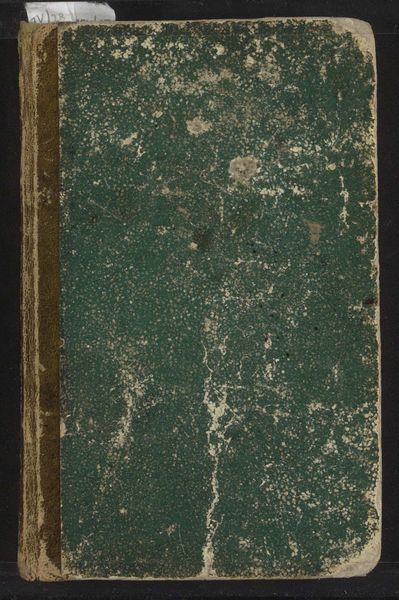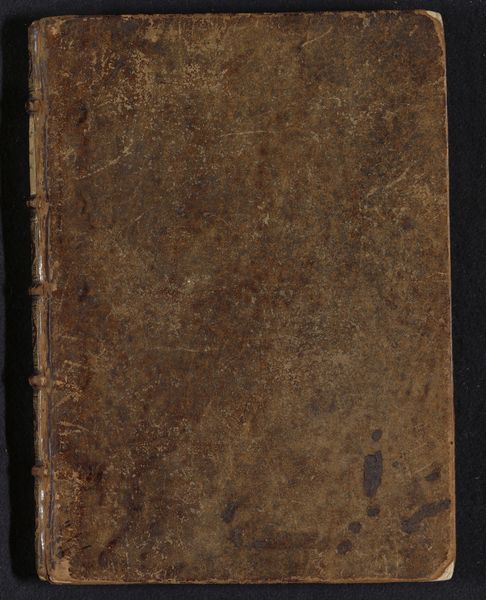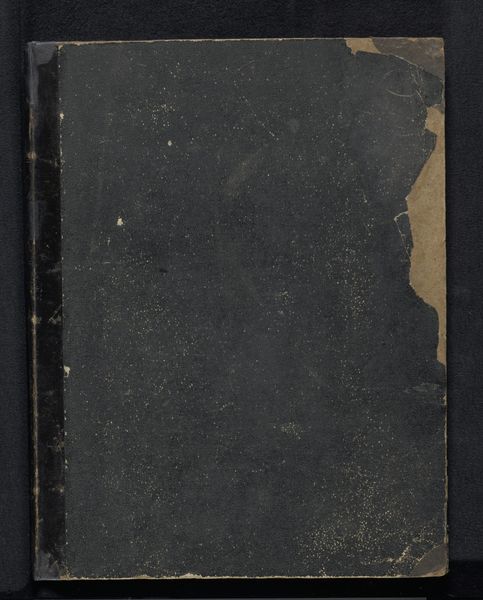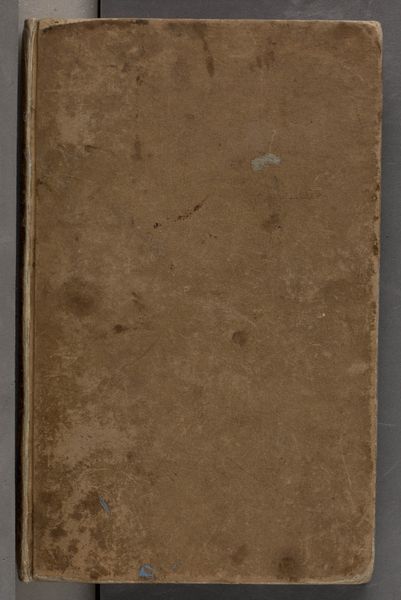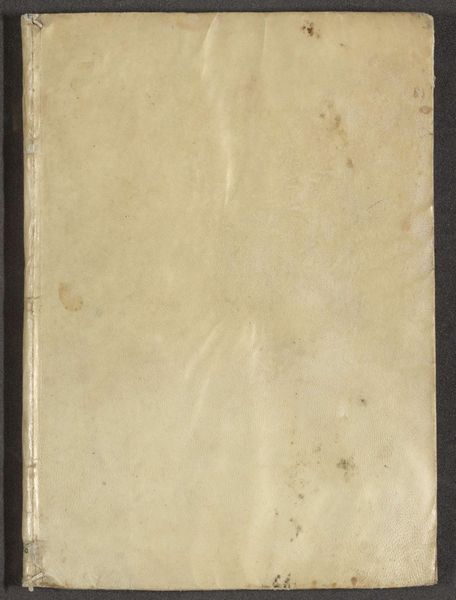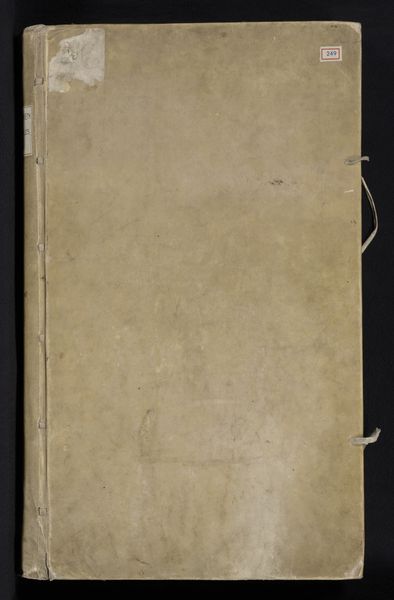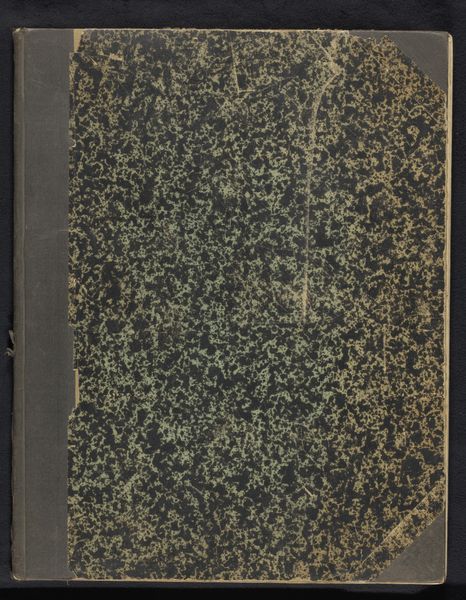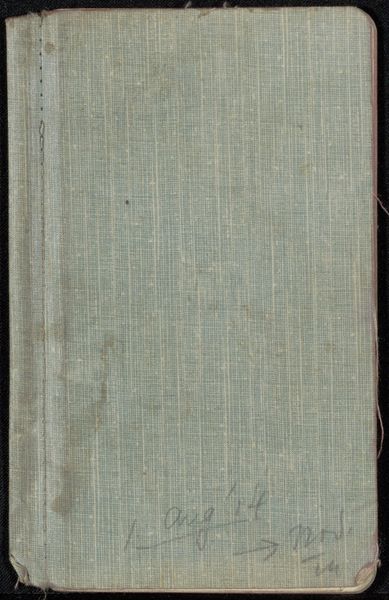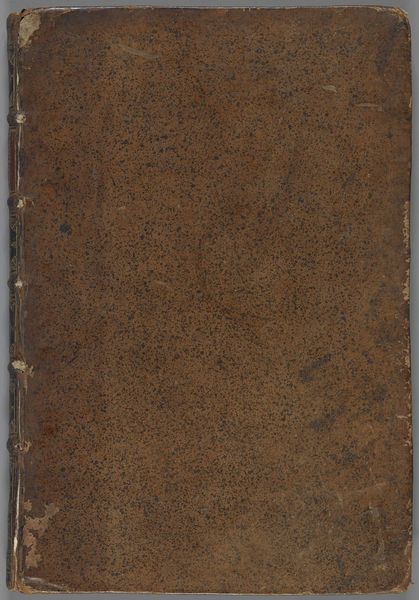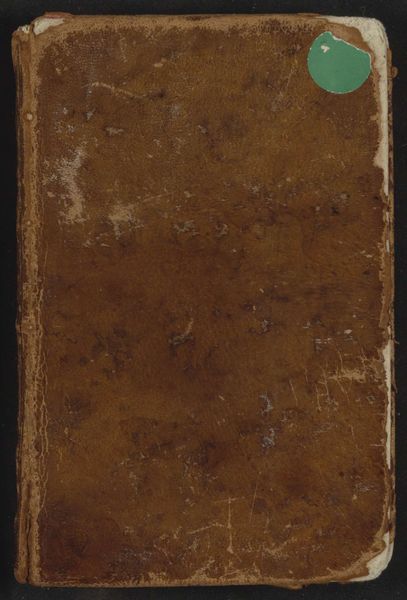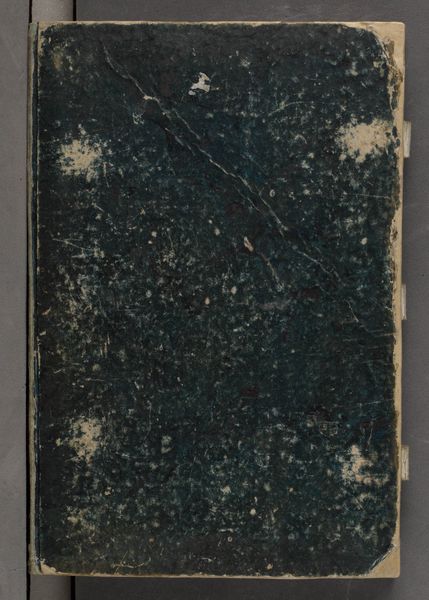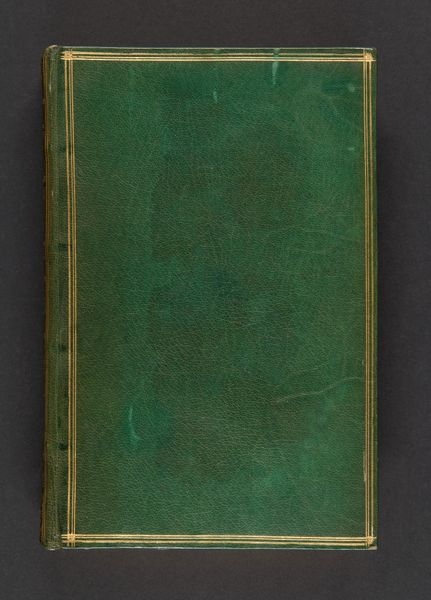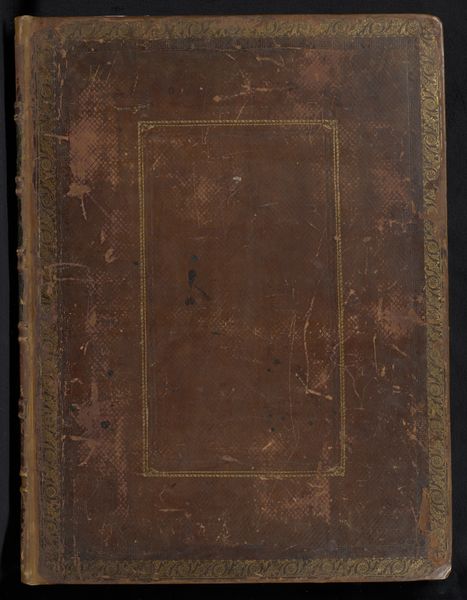
drawing, paper, ink
#
drawing
#
paper
#
ink
#
romanticism
Copyright: Public Domain
Curator: Here we have "Skizzenbuch," a sketchbook created around 1847 by Ludwig Metz and housed here at the Städel Museum. Editor: The mottled, time-worn cover is captivating; that green and tan creates an intriguing sense of age and suggests journeys untold and stories kept inside. Curator: Exactly. Given the nature of the piece—paper and ink—its preservation is remarkable. But think of it less as a finalized artwork, more as an artisan’s portable studio and an important resource reflecting 19th-century artistic production. What materials did Metz choose? How were they sourced? Were they commonly available? The Romanticist leanings also suggest themes Metz may have worked with, perhaps relating to German landscapes of the time. Editor: I agree, however I think that we must think also about the concept of the 'sketchbook' itself. Whose stories did it preserve? As we consider the materiality and its sociohistorical background, let's also remember that visual storytelling is not politically neutral. How would Metz's work portray people's gender or socioeconomic roles? Curator: That's a relevant consideration. The sketches are bound; they’re literally confined to a narrative within these covers. Editor: Precisely. And as we delve further, we'll encounter more than just aesthetics, this artifact of creation provides opportunities for dialogue and discussion, about the stories behind the images in this piece of romanticism. I also feel compelled to discuss his artistic trajectory with greater clarity now as I review his earlier and later works to create something whole. Curator: So it all adds up. Even the apparent insignificance of a sketchbook provides us with tangible insight into social dynamics. Editor: I completely agree; even from what you thought were simple strokes, a deeper conversation unfolds, a symphony of culture, material, and emotion for consideration and thought-provoking analysis.
Comments
stadelmuseum about 2 years ago
⋮
In 1847, Ludwig Metz travelled to the Bavarian Alps. With a pencil and mostly in landscape format, he drew mountain and valley landscapes near Füssen and Berchtesgaden. Details on locations are comparatively rare, so that a further determination of what was depicted could only be made by the shape of the peaks. Occasionally, an interest in the changing cloud formations is shown, which was seldom considered in his other sketchbooks. A slender tree often leads the way into the landscape, a well-established means of directing the viewer’s gaze in landscape painting, but it does sometimes give the impression of composed landscapes to Ludwig Metz’s impressions of nature sketched here.The sheets enclosed with the sketchbook were created in a different context: except for one, these sheets are still stapled, most probably the remains of an otherwise unpreserved sketchbook that accompanied the artist on journeys through Italy and Croatia between 1874 and 1879. According to the dates and locations, Ludwig Metz must have travelled via Italy (Spoleto, Subiaco; Amrino, Gorizia) to the Croatian coast (Poreč, Rovinj, Šibenik, Solin, Split), where he mainly captured landscapes with outlined buildings in pencil.For a full sketchbook description, please see “Research”.
Join the conversation
Join millions of artists and users on Artera today and experience the ultimate creative platform.
